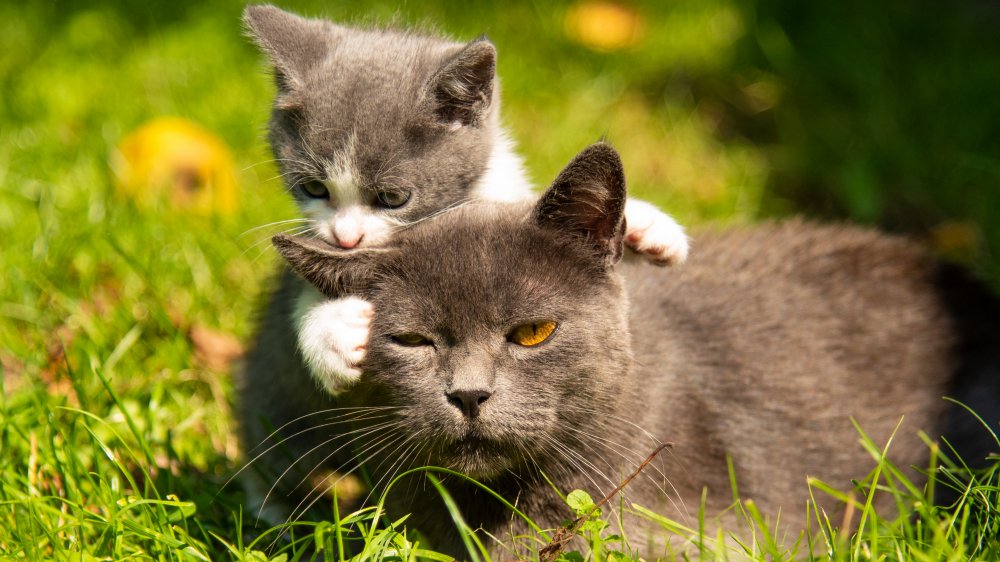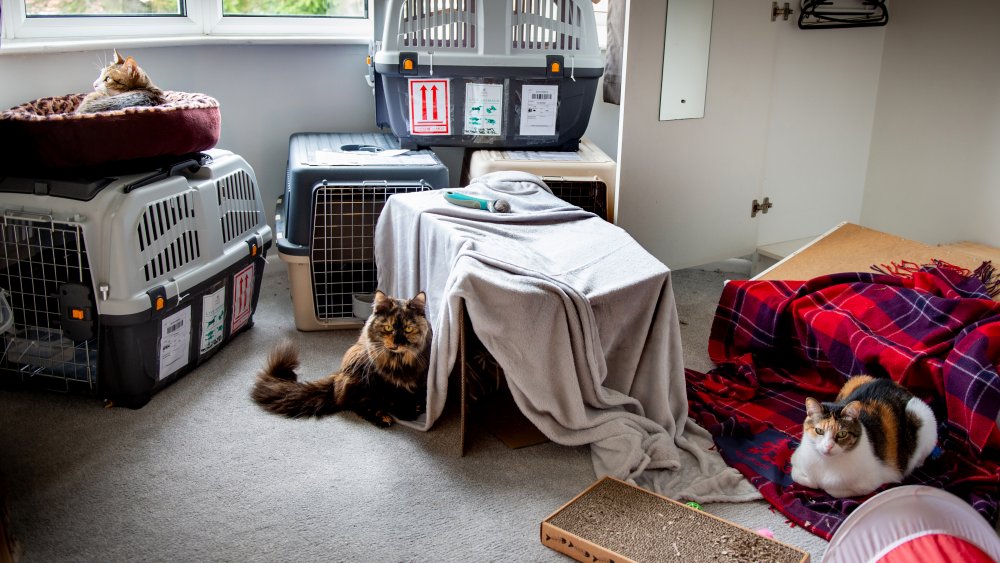The Real Reason So Many Cats Have White Paws
Socks or spats, the patter of white paws across the room requires either a musical accompaniment or an appropriate choir of "awws." But look again. White? Why white? Surely any cat in the wild would shun such attire, opting instead for something more camouflaged. So where did all these white-footed cats come from?
This was the question Live Science took to Dr. Leslie Lyons, a cat geneticist at the University of Missouri's College of Veterinary Medicine's the Feline Genetics Lab, which exists. The she gave was that these paws are a product of humanity's partial domestication of cats. While cats in the wild don't typically survive with white paws, because beasties notice the predator, some wild cats are still born with white paws due to random mutations that occur all the time.
When humans started to practice agriculture and cats showed up to prey on the mice that plagued their warehouses, there were, in Dr. Lyons's words, "probably people saying, 'I particularly like that kitten because it has white feet. Let's make sure it survives." Even thousands of years ago, humanity couldn't resist the sheer cuteness of a cat paw. So, because people ensured these anomalous cats survived, these really not suitable for the wild cats thrived.
The birth of breeds
In some ways, it would be perfectly correct to consider this the beginning of cat breeds. In a fascinating overview of domestic cat genetics, how they spread around the world from Mesopotamia via seafaring and empire building, and the birth of fancy breeds published by Nature, researchers suggest that because the recognition of specific cat breeds mainly occurred in the 19th century — for the sake of fancy cats — previous domestication was probably focused on behavioral changes, i.e. not clawing people's faces off.
However, white paws are a dominant, accidental characteristic in domestication because, following the logic of mice breeding found in research published by The Royal Society, tamed creatures remain and breed around people. So, the white paws, which people set out to keep, encourage more cats with white paws to hang around people, because that way they will have the secured food and housing to breed further. Similarly, to return to Dr. Lyons's answer, "Humans probably also selected for cats who were calm and comfortable around humans."
A cycle then was created in which the white paws were largely irrelevant in terms of character defining genetics, but reinforced the need for a species that would face greater difficulty in the wild to stay with humans and humans who wanted a cat that would be more relaxed around them as their house or ship cat. Thus white paws spread everywhere people went, even though it wasn't intentional.

